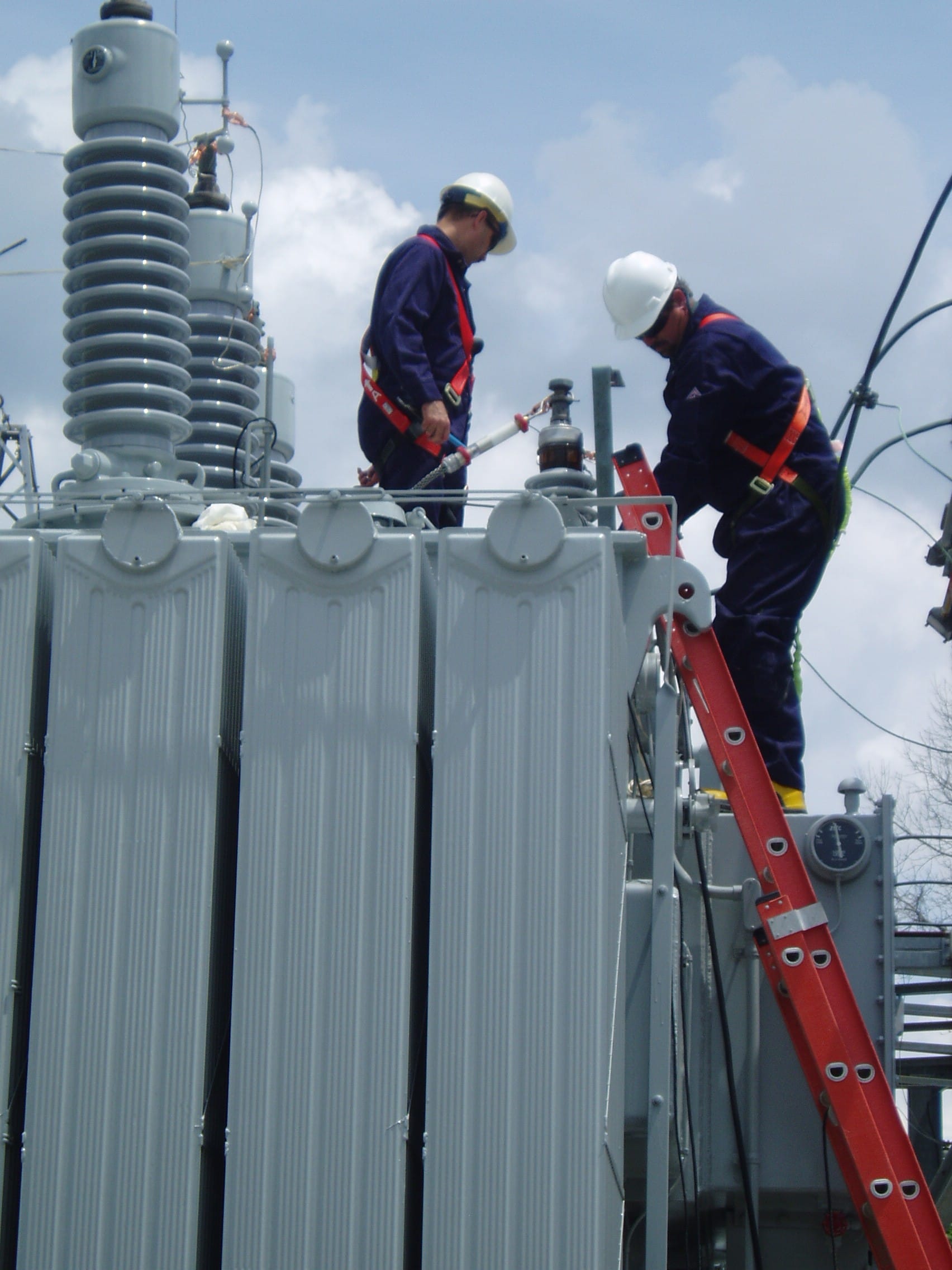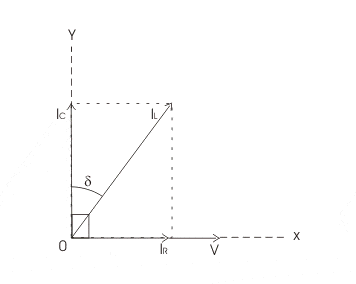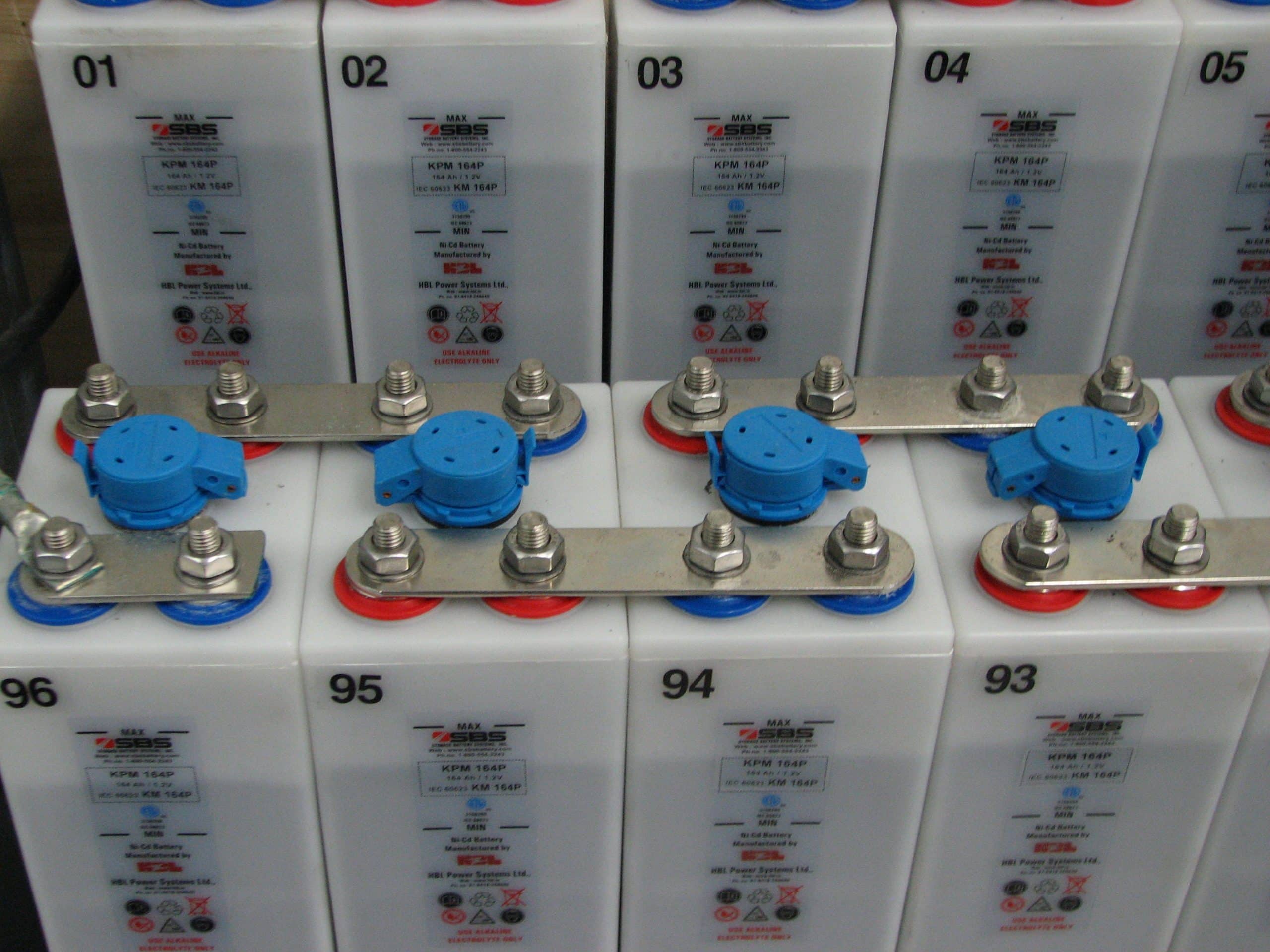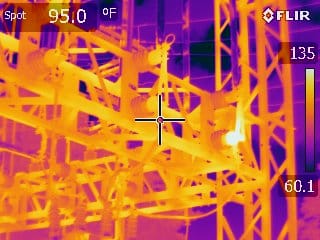ELECT, P.C. is a full service testing firm
Protective Relays

Relays that have been in service for many years also require periodic testing to verify they will operate predictably and reliably. Older electro-mechanical and solid-state relays contain components, such as springs and electrolytic capacitors, whose physical characteristics can change over time, possibly compromising system coordination, reliability, or safety. In some cases, relays have been installed or set incorrectly from day one, but remained in service for many years as system conditions never warranted a trip.
ELECT, P.C. has the tools, experience, and expertise to properly and comprehensively test and document any protective relay system, as well as to make necessary adjustments or recommend solutions if problems are found. We regularly calibrate and commission all major manufacturer’s relays and have the tools and expertise required to safely and accurately commission and test, or diagnose problems with your protective relaying system. ELECT, P.C. can also assist in developing a testing maintenance plan to comply with NERC PRC-005-2 requirements, if applicable.
Circuit Breakers

Medium/ High Voltage breakers
- Contact Resistance
- Time/travel
- Insulation Resistance
- Mechanical Operation
- AC Power Factor
Low Voltage
- Primary Current Injection testing (to 50kA)
- Secondary injection
- Contact Resistance
- Insulation Resistance
Power Transformers

ELECT, P.C. provides testing services for new and in-service transformers than can provide an indication of the health of a transformer, or indicate a repairable problem or other issue requiring attention.
• AC Insulation power factor (overall power factor)
The transformer insulation (paper surrounding the individual conductors and introduced between winding layers) is critical to the operation of the transformer, as it prevents internal short circuits and arcs from developing between turns or between the conductors and grounded portions of the transformer. Moisture, oil and atmospheric contaminants, thermal aging of paper insulation, and gases formed as a result of elevated temperatures can compromise the oil and insulation, eventually leading to a catastrophic failure.
• Bushing power factor
The transformer bushing is weak link in the overall insulation to ground of a transformer. Bushings may fail due to overvoltages or due to the slow degradation of insulation material. As with the overall transformer power factor test, the bushing power factor test proves an indication of the overall health of the bushing insulation, and can provide an indication of pending failure.
• Winding resistance
The transformer winding resistance test is a precise measurement of the winding resistance that can be compared to historical or original measurements. A gradual or sudden increase can indicate the development of an internal loose connection, which may lead to a local hotspot within the transformer, possibly leading to failure. This may be due to a loose or failing bolt, crimp, or brazed connection, or degraded tap changer contact. The results of this test may indicate the need for additional tests to help determine the specific cause.
• DC Insulation Resistance
An insulation resistance test is a basic measurement of the integrity of insulation between windings and ground. It is performed by applying a high DC voltage to the winding and measuring the small current that flows at steady state to arrive at an Ohmic value of the insulation between the conducting portions of the transformer being measured. A significant decrease in insulation resistance over time can indicate insulation degradation or pending failure requiring the transformer to be taken out of service. Polarization index, which is ratio of the insulation resistance values at ten minutes and one minute, provides valuable insight into the condition of the transformer insulation system. Insulation resistance testing can also be performed on generators and motors for the same purpose.
• Oil Screen Tests
Mineral oil and other dielectric fluids can be sampled from a transformer and tested for dielectric properties such as dielectric breakdown voltage, moisture content, acid number, power factor, specific gravity and oxidation inhibitor. The results of these tests can be used to evaluate the condition of the insulating oil. Decisions can be made from tests to perform condition-based preventive maintenance. ELECT, P.C. can sample oil and provide expert advice based on the laboratory test results.
• Dissolved Gas Analysis
Mineral oil and other dielectric fluids will break down into certain gases if exposed to elevated temperatures. The gases generated are dependent upon temperature. These gases have some solubility in oil; therefore, the presence of certain dissolved gases in oil is indicative of internal issues. The types of gases and their relative concentrations give clues as to exactly what the nature of the problem may be and just how severe the problem may be. ELECT, P.C. can sample oil and provide expert advice based on the laboratory test results. We can also administer an on-going preventive maintenance plan based on scheduled transformer oil test.
VLF Medium Voltage Cable Testing

VLF (Very Low Frequency) withstand testing is similar to an AC HiPot test but with a lower frequency output (typically 0.1 Hz). It is a pass/ fail test in which a specific voltage is applied for a specific time.
VLF testing will reveal serious cable defects, such as water trees and weak splices, but is not destructive to good insulation, or where there are minor defects, and does not lead to premature failures as with DC voltage testing.
ELECT, P.C. offers a variety of VLF testing options and services.
VLF Tan Delta Testing

A Tan Delta test, used in conjunction with a VLF hipot, permits the user to grade the deterioration level of many cables in order to prioritize replacement, rejuvenation, or to determine what additional tests may be useful.
TD is a “global” test of the cable, providing the condition from end to end. Using a VLF as the voltage source and a separate divider to make the measurements, the voltage is raised in steps while measuring the Tan Delta of the cable. If a cable is perfect, it behaves like a capacitor where there is a phase shift of 90° between the voltage and current. The more degraded the insulation and accessories are, the more this angle becomes less than 90°, as resistive leakage current is added. This change in the angle is easily measured and is indicative of the degree of degradation. Both the absolute TD value as well as the TD trend as the voltage is increased must be considered in the diagnosis.
TD is a very important tool when installing new cables. The TD can be utilized to establish a base point reference for future maintenance testing. Even with aged cables, the TD testing can help to determine a cable’s health and provide a reference for future testing.
Substation Batteries

ELECT, P.C. can test and monitor your substation batteries to verify they are healthy. We utilize battery impedance testing, specific gravity monitoring, and visual and mechanical tests to thoroughly characterize battery health.
Additionally, our year-to-year trending capabilities allow you to predictably schedule and budget for replacement batteries.
Infrared Testing

Thermography is widely used in industry for predictive maintenance, condition assessment, quality assurance, and forensic investigations of electrical systems. Infrared thermography is a relatively inexpensive way to get a snapshot of the health of your electrical systems and equipment in a completely non-invasive manner.
In electrical power systems, thermographic scans can easily identify loose connections, failing insulators, damaged fuses, and other equipment and system problems that result in overtemperatures. Often a relatively inexpensive thermographic scan can easily identify a failing component well before it fails completely and expensively. Additionally, a thermographic scan of a new electrical installation can be used to verify that energized equipment and current-carrying components are installed and operating properly.
Ground Resistance
